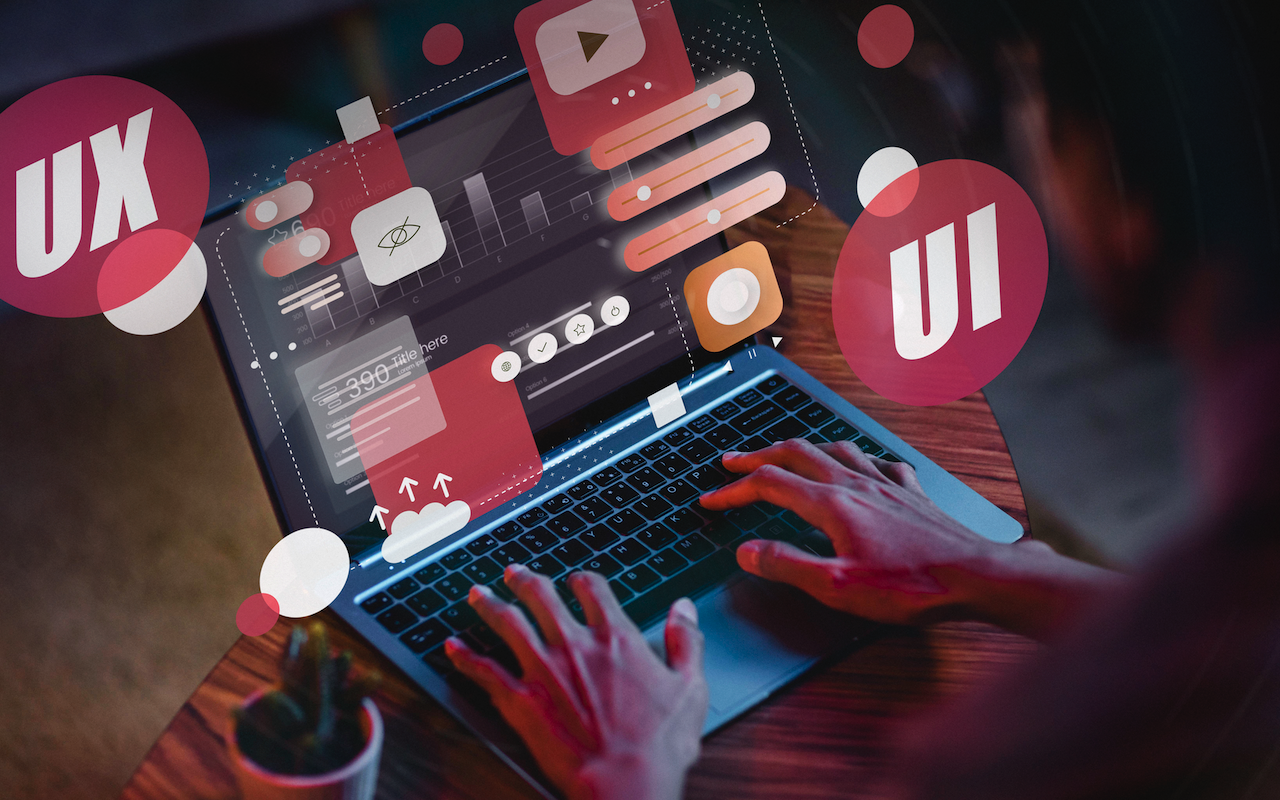
In today’s fast-paced digital world, web design has evolved from a purely aesthetic endeavor into a core aspect of user experience (UX), branding, and functionality. As technology advances, web designers and developers must constantly adapt to stay ahead. In 2025, emerging tools, design philosophies, and user expectations are transforming how websites are created, optimized, and experienced.
This article explores the key trends and technologies defining the future of web design, offering insights for businesses, developers, and creatives alike.
1. The Rise of AI-Powered Web Design
Artificial Intelligence (AI) has revolutionized nearly every industry and web design is no exception. AI tools now assist in design creation, content generation, A/B testing, and personalized UX.
AI-Driven Design Platforms
Platforms like Wix ADI and Bookmark’s AIDA use AI to build entire websites based on user preferences. These tools can analyze business needs, competitor websites, and industry trends to generate smart layouts, color schemes, and content suggestions.
Chatbots and Conversational Interfaces
AI-driven chatbots powered by natural language processing (NLP) provide instant customer support, guide users, and enhance user engagement. With advanced AI like GPT-based chat interfaces, websites can offer human-like assistance 24/7.
2. Voice User Interface (VUI)
With the growth of voice search and smart assistants (Alexa, Siri, Google Assistant), optimizing web design for voice interaction is crucial.
Key VUI Considerations
- Natural language structure: Websites should support conversational content
- Faster loading speeds: Voice users expect instant responses
- Microdata implementation: Schema.org tags help search engines interpret content for voice
Integration Opportunities
Sites can implement voice navigation features for improved accessibility and UX. For example, real estate or eCommerce websites can allow users to search by speaking instead of typing.
3. Motion UI and Micro-Interactions
In 2025, motion design is a powerful tool for enhancing visual engagement and storytelling.
Why Motion Matters
- Draws user attention to key elements
- Improves usability by providing visual feedback
- Adds personality to a brand's digital presence
Examples of Motion Design
- Loading animations
- Button hover effects
- Animated navigation menus
- Scroll-triggered animations
Micro-interactions are small, subtle movements or changes triggered by user actions. They are essential for guiding users and reinforcing actions such as liking a post or submitting a form.
4. Minimalism with a Bold Twist
Minimalism remains a top design principle in 2025 but it’s evolving. Today’s minimalist designs are paired with bold color schemes, dynamic typography, and 3D graphics for a more expressive aesthetic.
Modern Minimalism Characteristics
- Clean layouts with plenty of white space
- Asymmetrical grids and card-based interfaces
- Vibrant accent colors and gradients
- Custom, oversized fonts
This fusion creates a balance between clarity and creativity, appealing to both function-focused users and visual-driven consumers.
5. Mobile-First and Responsive Web Design
Mobile-first is no longer optional; it’s standard. With over 60% of global web traffic coming from mobile devices, websites must be responsive, fast, and functional across all screen sizes.
Core Mobile-First Strategies
- Prioritize thumb-friendly navigation
- Use fluid grids and flexible images
- Optimize for speed using tools like Google PageSpeed Insights
- Implement Progressive Web Apps (PWAs) for offline access and app-like experiences
In 2025, Google’s mobile-first indexing ensures that the mobile version of your site is the primary basis for how search engines rank content.
6. Dark Mode and Light Mode Toggle
User interface personalization is in demand, and dark mode has become a user favorite. More websites are offering light/dark mode toggles to improve accessibility and comfort.
Benefits of Dark Mode
- Reduces eye strain, especially in low light
- Extends battery life on OLED screens
- Adds a sleek, modern look
A good implementation ensures proper contrast, legibility, and seamless toggle functionality. Accessibility considerations must be baked into both modes for inclusivity.
7. 3D Elements and Immersive Visuals
WebGL and modern JavaScript libraries like Three.js have enabled the use of 3D objects and environments directly in the browser.
Applications of 3D in Web Design
- Product visualization in eCommerce
- Interactive storytelling (games, education, real estate)
- Virtual showrooms for brands
As internet speeds and browser capabilities improve, expect to see more interactive, immersive designs using 3D models and parallax scrolling techniques.
8. Accessibility and Inclusive Design
In 2025, accessibility is a priority, not a bonus. Web accessibility ensures people with disabilities can use and interact with your site effectively.
Key Accessibility Practices
- Use semantic HTML and ARIA labels
- Maintain proper color contrast ratios
- Ensure keyboard navigation is smooth
- Add alt text for all images and media
Regulations like the ADA and WCAG guidelines continue to push for broader inclusion and accessibility-focused design also boosts SEO and usability for all users.
9. No-Code and Low-Code Platforms
Tools like Webflow, Framer, and Bubble are empowering designers and entrepreneurs to build sophisticated websites and web apps without writing code.
Benefits of No-Code Tools
- Rapid prototyping and deployment
- Lower development costs
- Greater creative freedom for non-developers
- Easier collaboration between designers and marketers
For startups, freelancers, and small businesses, no-code platforms open doors to innovation without heavy technical investment.
10. Cybersecurity and Privacy-Centric Design
As data privacy becomes a global concern, web design is now incorporating privacy-first principles from the ground up.
Key Security Elements in Design
- Transparent cookie consent banners
- SSL encryption and HTTPS protocols
- Two-factor authentication (2FA)
- Minimal data collection and clear privacy policies
Designers are also prioritizing user trust through design, such as secure checkout processes, verified trust badges, and simplified permissions for apps or newsletters.
11. Headless CMS and Decoupled Architecture
Traditional CMS platforms are being replaced by headless CMS solutions like Contentful, Strapi, and Sanity.
Why Headless CMS is Rising
- Offers greater performance and flexibility
- Separates content management from front-end delivery
- Ideal for omnichannel content distribution (web, mobile, IoT)
Headless architecture enables developers to use any front-end framework (React, Vue, Svelte) while still pulling content dynamically from a CMS backend.
12. SEO-Friendly Design
Ssearch engine optimization (SEO) isn’t just about keywords; it’s also about how your site is designed. A modern web designer must consider SEO from the earliest stages of development.
Design Features That Support SEO
- Clean, crawlable code
- Fast page load speeds
- Mobile responsiveness
- Internal linking and structured data (schema)
- User-friendly URLs and navigation
Integrating these features improves visibility and drives more organic traffic, which is critical in an increasingly competitive online landscape.
13. Sustainable Web Design
Environmental consciousness is influencing web design in surprising ways. Sustainable web design emphasizes:
- Lower carbon footprints by minimizing unnecessary scripts and images
- Efficient coding to reduce server load
- Green hosting with providers that use renewable energy
Lean design, compressed media files, and avoiding autoplay videos are some strategies that reduce energy consumption and support a greener internet.
14. The Role of Augmented Reality (AR)
AR is redefining user interaction by overlaying digital elements into real-world environments. Thanks to ARKit (Apple), WebXR, and other frameworks, AR is now available through browsers and mobile apps.
Web AR Use Cases
- Virtual try-ons for fashion and accessories
- 3D floor plans for real estate
- Interactive learning experiences
- Gamified shopping environments
As AR becomes more accessible, brands integrating it into web experiences will stand out from the competition.
Conclusion: Designing for the Future
Web design in 2025 is not just about visual appeal; it’s about creating intelligent, responsive, inclusive, and secure digital experiences. As AI, voice interaction, and immersive technologies take center stage, designers must blend creativity with technical savvy to meet user expectations.
Whether you're a business owner planning a website revamp, a designer seeking new inspiration, or a developer exploring tools for modern web projects, staying ahead means embracing change and leveraging these trends to create meaningful, future-ready experiences.
Featured Image by Freepik.
Share this post
Leave a comment
All comments are moderated. Spammy and bot submitted comments are deleted. Please submit the comments that are helpful to others, and we'll approve your comments. A comment that includes outbound link will only be approved if the content is relevant to the topic, and has some value to our readers.

Comments (0)
No comment